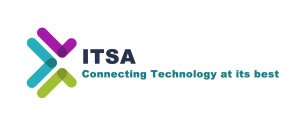 In a Q&A with CiE Bernd Gessner, general manager automotive at ams, talks to Neil Tyler. Covering standards and compliance to new products, Gessner looks at how the automotive industry is changing and how ams is looking to adapt to meet the challenges ahead.
In a Q&A with CiE Bernd Gessner, general manager automotive at ams, talks to Neil Tyler. Covering standards and compliance to new products, Gessner looks at how the automotive industry is changing and how ams is looking to adapt to meet the challenges ahead.
CiE: What are your main automotive products and how are you using them to position yourself in the automotive area?
Bernd Gessner: As a company we focus on high performance analogue ICs, which connect the real world of analogue with the digital one of processors and memories. Analogue is the most profitable segment for us, representing approximately 17-20% of the total semiconductor market. Most customers work with us because of our ability to be extremely accurate; we don’t do low power, we do ultra-low power, extremely low noise and highly integrated circuits with extreme accuracy. In order to design high performance analogue circuits you need to combine design with high performance processes, and this is why we will always continue to invest in our manufacturing processes, including test.
In the automotive area, we provide a full value chain, including product definition, IC design, state-of-the-art manufacturing and test.
Our product portfolio includes sensors and sensor interfaces, power management and BUS systems, with products being divided into 4 key areas: ASICs, battery management ICs, magnetic position sensing ICs and communication and module supply.
CiE: What are the key drivers within the automotive space?
Gessner: In the automotive space we see 3 big drivers: they are environmental protection and sustainability; safety and comfort /entertainment or infotainment.
The environmental protection and sustainability area covers all topics related to providing higher efficiency, as well as the electrification of conventional cars (e.g. EPAS) reinforced 12V, 48V, micro hybrids (Start/Stop), mild hybrids (brake energy recovery, boost), PHEV, FEV (e-mobility including e-bikes, scooters). This area also includes brake energy recuperation, variable valve timing etc.
The safety area e.g. collision avoidance systems, child seat detection, lane departure warning etc. are mainly paired with our sensor interface ASIC expertise. In addition to this, we have standard products for safety applications.
In the area of comfort and enter- and infotainment, which includes double clutch transmission and LED interior lighting for example, we offer ICs with different interfaces and function to make driving more comfortable while saving power and thus reducing fuel consumption.
CiE: Standards and compliance are crucial in this market – what specifications are you having to address and how are they impacting on the development of new products?
Gessner: First of all, we have to consider customer-specific requirements for starting a new product. These requirements are critical, and determine the usage of international standards such as Jedec, Mil or specific ISO standards. ams, however, also use cells which are already qualified according to these standards. We develop new products based on our process technologies, which are qualified according to these international standards. Applicable international standards are always applied when using risk analysis studies (e.g. DOEs, FMEAs) and simulations during the development process.
At ams we are committed to meeting the highest quality standards, and have been certified according to ISO/TS 16949:2009, as well as ISO 9001:2008, ISO 13485:2003, AEC Q 100 and different EMC standards like IEC41. This makes us one of the few semiconductor manufacturers worldwide fully qualified for the automotive industry.
As an ISO26262 experienced company, we run a safe launch program for every automotive product, and provide ID for every automotive IC. We develop our IC in a development flow conformant to ISO26262, and have a Safety manager for any ISO26262 project. We are experienced in cost effective implementation of ISO26262 requirements, which our customers greatly appreciate, especially in safety critical applications.
CiE: You”ve had a number of significant wins with products such as FlexRay; what impact will new specifications have on this product and how will you look to comply with new EMC and ESD specifications?
Gessner: We have a unique position on the market as we are able to provide products with high junction temperature rating of 165°C, which makes the ams device suitable for use in high-temperature powertrain applications
Since the application of FlexRay in vehicles, several changes in specifications have been implemented, such as the newest FlexRay Standard 3.0.1 or the upcoming ISO 10681, which is not yet available for the Physical Layer or EMC and ESD requirements. Our current available FlexRay products comply with the FlexRay standard (available at the time) and are verified against the EMC / ESD requirements. In terms of EMC / ESD we have spent a large amount of time researching and developing activities to fulfill those new requirements, which will be implemented in our upcoming products.
CiE: What trends are you seeing in terms of the adoption of magnetic position sensing applications?
Gessner: We see a strong trend in the safety area. Magnetic position sensing applications can often be used as a replacement for unreliable and dust/dirt sensitive potentiometer technology. It is the ideal solution for meeting the demands for increased precision, improved safety (e.g. ISO 26262, self-diagnostics) and resolution requirements.
We’ve also noticed an increased use of BLDC motors. We reacted on this trend and have ICs available which specifically fit this application.
Our patented hall-based position sensing technology has been designed to guarantee immunity to stray magnetic fields, resulting in both robustness and lower system costs. Our portfolio includes rotary position sensors, which detect the absolute angular orientation of an on-axis 2-pole magnet, rotating over the centre of the IC. We also produce 3D absolute position sensors that are capable of detecting the absolute linear position of a 2-pole magnet, as well as absolute angular orientation in on- and off-axis systems.
Magnetic position sensing solutions will definitely find new uses in applications with 3D hall sensors, such as transmission, steering or gear sticks.
The issue of reliability in transmission applications is a further trend, with the advantages of hall based sensors becoming very clear- hall based sensors are non-contact, and are therefore immune from wear.
CiE: What impact is the importance attached to battery management having on application development and how is ams responding?
Gessner: Our strategy is to offer highly accurate and flexible solutions. Strategically, we offer a full range of battery management solutions for the 12V, 48V, high voltage Li-Ion applications as a platform solution, as well as offering special features to support safety critical applications (ISO26262 standard).
Because the complete solution (and not the single IC) is the most important factor to our customers, we provide reference designs, which give a very good idea of the complete system and possible form factor. The high -side reference design presents practically relevant implementation of an automotive 12V Battery Sensing System, using the AS8510 Sensor Front End IC, in combination with the AS8525 System Base Chip and a 16FX-Series Microcontroller from Fujitsu. Additionally, we have a low- side reference design available, as well as pure demo kit. It’s of huge importance to understand the complete application, share possible application diagrams and be in on-going discussion with our partners/customers.
The key is excellent battery management application support on one hand, and the development of reference systems on the other hand.
CiE: Looking into the future how is the automotive sector likely to develop over the coming 5 years?
Gessner: We think that there will be a battle of powertrain technologies until 2020. We also believe that up to then, fewer than 10% of all vehicles will be EVs and HEVs. The main challenge for E-Mobility is still the battery, in particular the low range, safety and size. Pure battery EVs will be limited to city driving. Extended range electric vehicles allow very flexible usage, and can be the first vehicle in a family.
Another huge trend to come is the idea of developing a “connected car”. Car-to-car and car-to-internet communication should create an innovative information system that assists the driver. For example, mobile phone and car can connect, and customers can either wake up single segments of the car, or even park using their smart phone.
As the progressing electrification of the powertrain increases the need for reliable and safe electronic parts, there will be a close cooperation between OEMs and semiconductor manufacturers. As a result of this, safety standards as ISO26262 are gaining even more importance to our customers and OEMs.
Integrated smart electronics will play a key role in developing and improving safety and comfort gadgets. One of the main ideas is the fusion of multiple data, such as ultrasound, sensors and cameras. The visions for 2020 include vehicles driving autonomously, or emergency breaking with 6D vision.
Most of the trends lead to an increase of electronics in cars, therefore the automotive semiconductor market is said to increase from 18 billion to 34 billion in 2018.
For the next five years we expect an increasing number of design-ins in the following application areas:
Conventional car electrification and reinforcement of 12V board net
Introduction of 12V Li-Ion
EDLC energy buffer
48V board net
HV battery management for plug in hybrid vehicles and range extender vehicles, e-bikes and e-scooters,
Non-automotive areas: solar street lighting, non-interruptible power supplies, PV energy buffer
Within a period of more than five years we are planning design-ins for e.g. FEV HV battery management or Li-Ion energy buffer in pulsed thermodynamic systems.
CiE: How will ams adapt and change in the light of the changes identified above?
Gessner: ams is continuously developing innovative standard products, which can also be used as an IP development platform for new ASICs.
We are concentrating on our strong position in terms of new safety requirements (ISO26262) in all product areas.
 CIE Components in Electronics
CIE Components in Electronics



